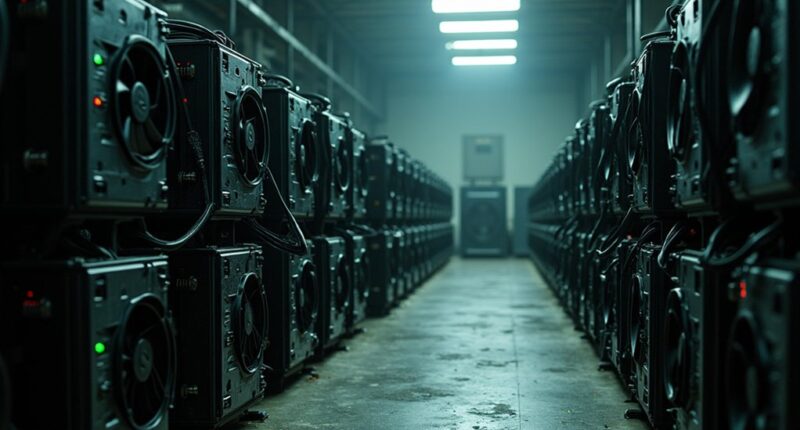How does a nation with some of the world’s cheapest electricity find itself seizing hundreds of thousands of cryptocurrency mining rigs? Iran’s recent crackdown on illegal crypto mining operations has revealed a complex web of energy challenges, economic pressures, and regulatory battles.
Over the past three years, Iranian authorities have confiscated more than 240,000 crypto mining devices, which collectively consumed a staggering 800 megawatts of electricity – nearly equivalent to the output of the country’s Bushehr nuclear power plant. Yet this may be just the tip of the iceberg, with an estimated 700,000 illegal mining rigs still operating throughout the country.
Iran’s massive crypto seizures barely scratch the surface, with three times more illegal mining rigs still draining the nation’s power grid.
The appeal of mining cryptocurrency in Iran is obvious when you look at the numbers. While mining one Bitcoin costs around $100,000 in the United States, Iranian miners can do it for just $1,324, thanks to heavily subsidized electricity rates of $0.002 per kilowatt-hour. This astronomical cost difference has turned Iran into a crypto mining haven, but at a steep cost to the national power grid. As of December 1, 2024, the government has implemented a ban on advertising crypto mining equipment to further curtail the industry’s growth.
The surge in illegal mining has contributed to a 7% spike in electricity usage, forcing the shutdown of 13 power plants and triggering widespread blackouts affecting schools, businesses, and industries. Recent reports indicate that power outages caused $20 billion in economic damage, leading to immediate judicial intervention. The government has responded with increasingly aggressive measures, including cash bounties for reporting illegal miners and periodic bans on legal mining during peak demand periods.
Despite the crackdown, cryptocurrency remains a financial lifeline for many Iranians facing a rapidly depreciating rial and international sanctions. In 2022 alone, Iranian exchanges processed $3 billion in crypto transactions. The Central Bank has attempted to balance these competing interests by implementing a new regulatory framework that legalizes mining while maintaining strict oversight.
The situation has sparked public protests as citizens grapple with power cuts and deteriorating air quality, as power plants resort to burning polluting mazut due to gas shortages.
With a predicted electricity deficit of 25,000 MW looming next year, Iran’s battle between crypto mining and energy stability shows no signs of reaching an easy resolution.









